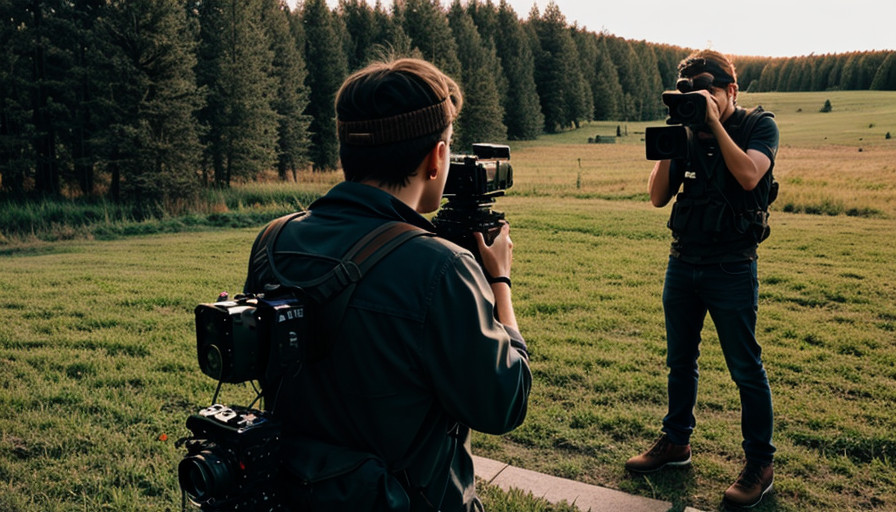Like a maestro conducting a symphony or a painter carefully detailing his canvas, filmmakers also weave intricate tapestries of story, sound, visuals and emotions. With every frame meticulously designed to convey the vision of its creator. But is filmmaking an art? This seemingly simple question has sparked much debate in cinematic and artistic circles alike.
In this article, we delve into the complex world of cinema to explore whether filmmaking truly qualifies as an art form. We’ll scrutinize the elements that constitute filmmaking – from scripting to editing, camera angles to soundtrack selection – all while drawing parallels with other recognized forms of art. Prepare for an eye-opening journey that may just change your perspective on what you see on the silver screen!
Understanding Filmmaking and Art.
The art of filmmaking is incredibly comprehensive, as it employs multiple art forms including writing, painting, sculpture and more in a synergistic manner. The amalgamation of these artistic elements encapsulates the diverse sensibilities and profound emotions that filmmakers aspire to evoke in their viewers.
The power of cinematography provides this unique ability to simultaneously transport us into various moods and worlds, immersing us deeply into stories unfolding before our very eyes.
Understanding filmmaking through an artistic lens enables one to appreciate the nuance and depth present at each stage of the process: from initial conception through exhaustive editing. Every shot selection, scripting twist, music overlay or design element is a crucial part of an intricately woven tapestry that culminates in a cinematic masterpiece.
Filmmaking therefore transcends mere storytelling—it becomes an experiential journey where every second holds meaning beyond its apparent surface value.
In this light, filmmaking is not just a form of art; rather it’s comparable to building elaborate architectural structures with layers upon layers of detailed craftsmanship.
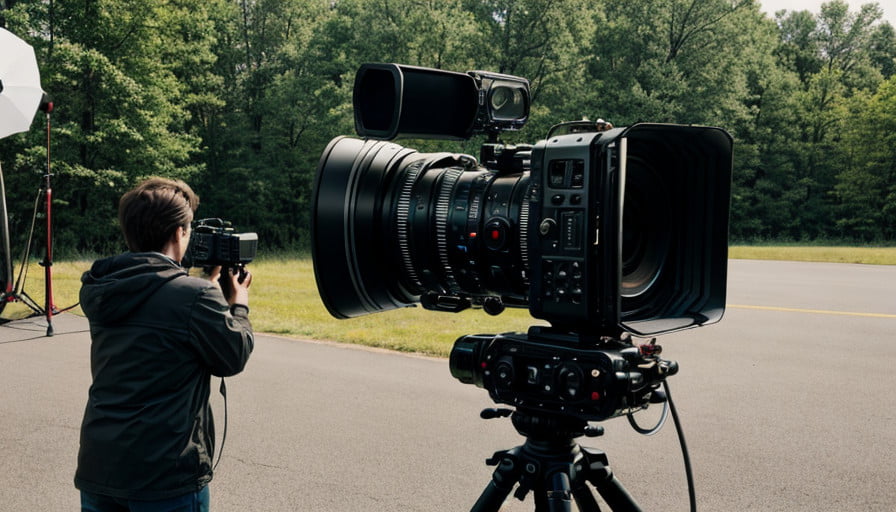
Each film serves as a monument bearing testament to human emotion, social dynamics and cultural nuances portrayed vividly on screen for audiences worldwide. It’s undoubtedly confluence that stamps it as one of the most compelling tales told by humanity—one frame at a time.
The Concept of Art: A Brief Explanation.
The pursuit to define the concept of art can be likened to a voyage into a labyrinth; complex, but deeply fascinating. At its fundamental level, art serves as a mirror reflecting both the nuances of human condition and the world around us, echoing through an assortment of mediums – paintings, music, sculpture, installations and yes, filmmaking.
The alluring essence of art springs from its ability not just to communicate ideas and emotions but also challenge our perceptive boundaries.
Despite varied interpretations over time and across cultures, two core components remain intrinsic to any form of artistic creation – intentionality and perception. An artist’s lay down of intentional strokes on canvas or deliberate manipulation of film elements manifests their intended vision or message.
Intriguingly though, it’s not merely about the creator’s intentionality but significantly about how the audience perceives it.
A surreal painting may elicit euphoria in one viewer while evoking melancholy in another – an illustrative testimony that art is as much about individual subjective experiences as it is about universal aesthetics revelations.
For prospective filmmakers dissecting this concept presents an unique opportunity for self-discovery – a deeper understanding not just regarding what they wish to convey but how they want it manifested within their audience’s cognition.
Indeed embracing this fluidity can empower them with creative liberty – unraveling untold stories through moving visuals that continue resonating long after curtains have been drawn.
Historical Perspective on Filmmaking as an Art.
Delving deep into the frame of history, one can’t ignore the intriguing evolution of filmmaking. It has not merely been a shift from silent flicks to 3D animations but an artistic revolution that’s unfolded over a century. Initially brushed aside as mere technology or entertainment, it took time for this medium’s artistic merits to gain acknowledgment.
The early cinematic masterpieces were a blend of theatre and photography but with unique storytelling capabilities that led to its recognition as an individual art form.
If we roll back into the era of silent films, we would find pioneering directors like D.W Griffith sculpting narratives that conveyed intense human emotions without voice or sound—only through visuals.
Then came the golden age of Hollywood where directors such as Orson Welles used innovative cinematographic techniques in creating seminal works like ‘Citizen Kane’ which is still regarded today as a masterclass in film-making technique.
European filmmakers weren’t far behind either; adopting realism in their narrative style, they created post-war classics that stunned audiences worldwide – even influencing a new wave of American filmmakers in the 70’s who respected cinema’s potential for personal expression just as much as commercial exploitation.
This complex interplay between evolving technologies and visionary imagination across borders solidifies film-making’s standing as an ever-evolving arena ripe for creative exploration—an art form indeed.
Technical Aspects of Filmmaking: An Artistic Approach.
Diving into the meticulous depths of filmmaking, it’s impossible to ignore the intricate technical aspects that careen this form of expression into a tangible reality. Filmmaking exhibits an exquisite blend of art and science, honoring the beauty and complexity of storytelling through motion.
A director’s artistic vision is channeled through precise camera angles, apt sound effects, plausible special effects, and astute lighting techniques—subtleties that elevate cinematic experiences dramatically.
Consider how color grading in post-production can completely reshape a film’s tone by instilling specific emotions or creating thematic consistency. Slight adjustments to hue or contrast can evoke vibrant euphoria in once gloomy sequences; thus guiding audience sentiments subtly yet assertively.
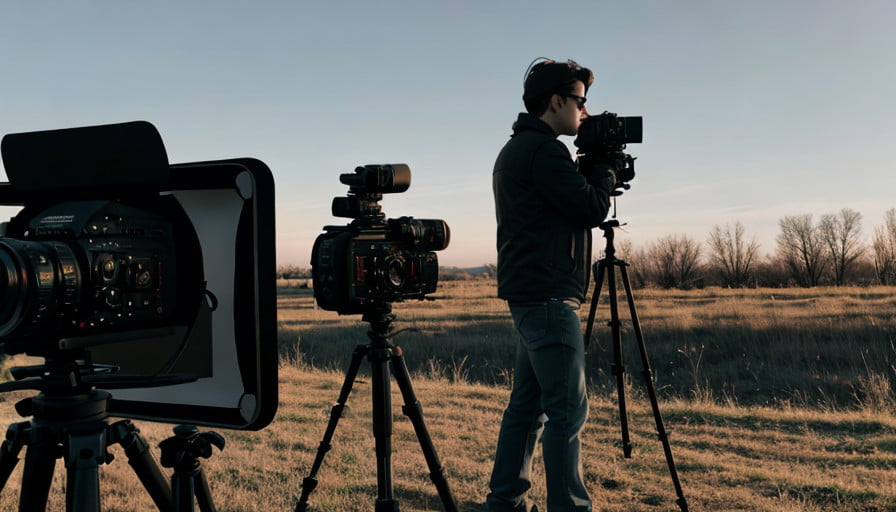
The steady evolution in virtual reality presents another intriguing facet, providing filmmakers with diversified canvases to etch their tales on. Immersive 3D architectures not only enhance visual treat but enrich engagement levels for viewers – as lines blur between craftsmanship and technology-assisted wizardry in cinema.
Moreover, destructive innovations have blurred conventional boundaries between high-end productions and indie films — thanks to affordable digital equipment like DSLRs, drones or handheld gimbals coupled with prosumer-grade software solutions such as Adobe Premiere Pro or DaVinci Resolve.
This revolution enables even aspiring filmmakers with limited resources to push ‘the art’ envelope further than ever before – birthing new forms & dimensions for this enthralling art-sci amalgamation known as cinematography.
The Aesthetic Side of Filmmaking.
Delving into the magnificent world of filmmaking, one can never overlook its profound aesthetic dimension. The aesthetics in film refer to a fusion of elements – from lighting, color palette and framing to composition, texture and movement – each orchestrated with meticulous precision to evoke specific emotional responses from the audience. The smallest details have a significant impact on how we perceive and interpret the narrative.
Visual metaphors are an especially striking part of this aesthetic side of filmmaking. They epitomize the director’s ability to create deeper layers of meaning that go beyond literal interpretation.
For instance, a lone character positioned against an expansive landscape could symbolize their feelings of isolation or insignificance; manipulating colors within a scene can influence our emotions drastically – just think about the chilling effect of harsh cold blue tones in thriller movies or warm hues enveloping romantic scenes.
Moreover, filmmakers often use unique camera movements and editing techniques to further influence our perception. They cleverly exploit these aspects not only for dynamic storytelling but also to express their individual artistic impressions thereby adding sublime dimensions to their work enriching their narratives considerably.
How Different Cultures Perceive Filmmaking as Art.
Diving into the cultural depth of filmmaking as an art, you quickly realize it’s a vast ocean with diverse hues. European filmmakers often create meticulously crafted cinematic experiences that test the depths of human emotions and societal norms.
These works encourage audiences to dwell on complex narratives and characters – a reflection of the continent’s rich history. Whereas Hollywood, representing American culture, is more inclined towards narrative-driven blockbusters; their aim often to dazzle viewers with visual spectacle while delivering compelling storytelling.
Asian cinema, on the other hand carries an entirely unique perspective that mirrors its distinct historical and sociopolitical developments.
Also known for making groundbreaking films abound in metaphors and riveting aesthetics like Chinese wuxia films or Japanese samurai dramas echoing deeply rooted philosophies and values presumably unique to Asian societies.
Bollywood from India stands apart with its vibrant mix of drama, music and dance sequences marrying interspersed dialogues narrating stories that elude realities yet are close to every Indian household.
All these different cultural approaches vividly highlight how we perceive and appreciate filmmaking not only as an art but also as a global language without words – reflecting social trends, societal issues, beliefs that often transcends borders resonating similar undercurrents despite our geographical disparities.
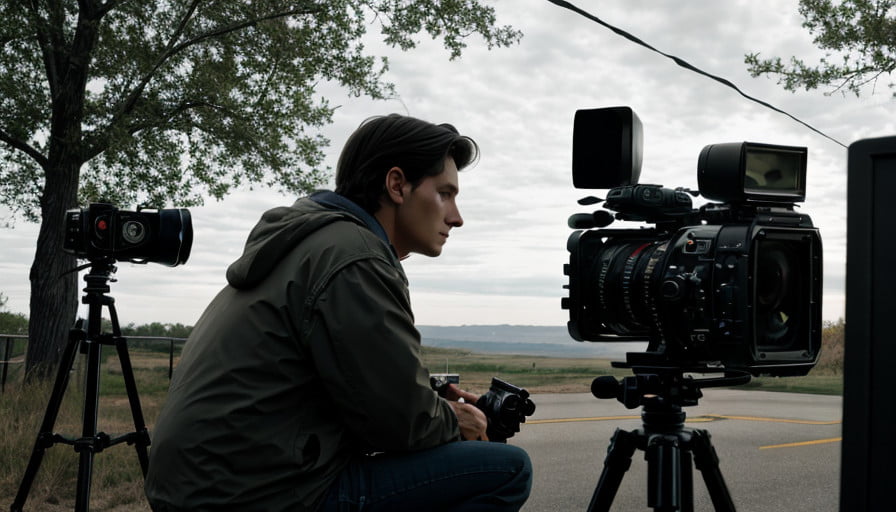
This shows us how this captivating medium serves both as escapism while managing to hold a mirror up to society reflecting shared human experiences across cultures.
Personal Interpretations: Is Filmmaking an art?
Delving into the creative folds of the filmmaking universe, it becomes glaringly evident that filmmaking unequivocally stands as an art form. With its rich tapestry woven from carefully curated visuals, meticulous sound design, engaging narratives, and unforgettable characters, each film serves as a vivid painting on a digital canvas.
The scenes are artfully crafted to stir our emotions, provoke thoughts and question realities – closely mirroring the quintessential essence of traditional art forms.
Yet in this visual storytelling medium known as filmmaking, lies another layer of artistic complexity — rooted in its all-encompassing nature.
Unlike other creative expressions limited by their standalone aesthetic representations or focused skills-set, films harmoniously integrate diverse artistic modes: music melds with dramatic performances; compelling scripts align with striking cinematography while syncopated editing rhythms underscore scene transitions.
This confluence of arts demands skillful orchestration — much like a conductor leading an orchestra towards melodious symphony — undeniably fortifying the claim that filmmaking is indeed an intricate style of fine art.
Here lies the crux: quantifying or categorizing what constitutes ‘art’ remains perennially contentious due to its boundless subjectivity. Undoubtedly though, filmmaking’s spirited engagement with multiple disciplines constructs a singular landscape abundant in creativity— allowing it to transgress barriers and establish itself firmly within the realms of high art.
Thus challenging us to readjust our lens when viewing cinema not just as mere entertainment but also appreciating it passionately for being intimate manifestation.
Why Is It Considered an Art?
Filmmaking is often likened to painting or music, it’s a canvas that uses light, color, and sounds to create compelling narratives. The director’s command over his tools – the camera and script – mirrors an artist holding a brush against a vast blank tapestry.
Their end goal? Evoking profound emotions through the manipulation of these elements, guiding audiences on an immersive journey that reflects society or challenges its norms.
Yet beyond its technical trappings lies another layer of artistry. Viewing filmmaking purely as moving pictures limits our perception of the term ‘art.’ Remember ‘art’ at its core is about expressing human emotions, ideas while pushing boundaries of conventional thinking.
Filmmaking does just that! Each film is a calculated emotional experience meticulously crafted; every frame, dialogue communicates something meaningful towards creating potent cinematic experiences.
From indie breakthroughs to award-winning blockbusters, movies affect us in ways we cannot fully understand – but isn’t true for all forms of art?
After all artists from all walks have always strived to portray the inexplicable complexity of human existence via their creations whatever medium they preferred– be it canvas or camera reels! So undoubtedly, filmmaking stands tall as one of the fine arts and continues to evolve just like any other art form.
What Makes It an Art?
Drawing a line between what is considered ‘art’ and what isn’t can feel arbitrary, given the broad encompasses of the term. In essence, art at its core is about expression; it’s a means to communicate ideas, emotions, and narratives that transcend beyond simple conversation. Among its many medium forms – painting, drawing and other traditional practices — filmmaking fits snugly.
Filmmaking is an art because it fulfills this fundamental criterion – communication through creative narrative. It incorporates elements from other disciplines as diverse as literature (through screenplays), fine arts (in set and costume design) to music (via film scoring).
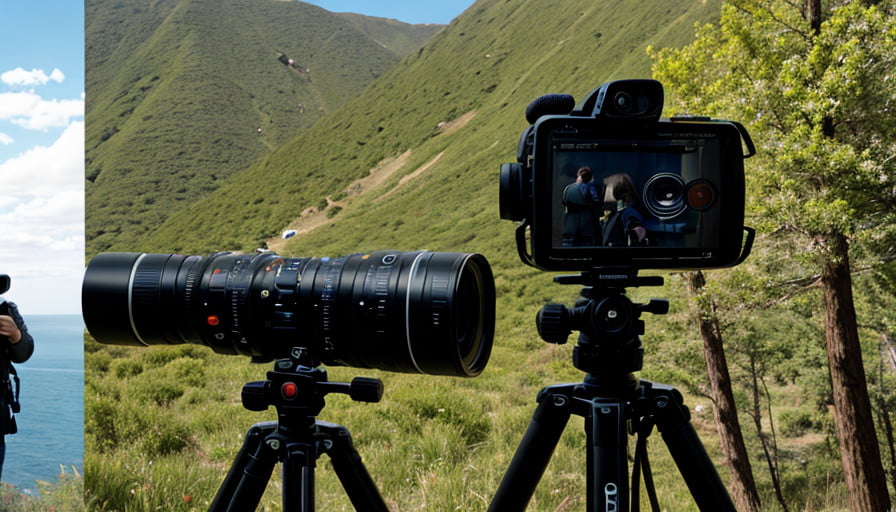
Each aspect revealing layers of artistic skills and talent devoted in crafting a visually entrancing story – essentially leading us to experience emotions visualized by the filmmaker; transfixing viewers with varied perspectives enriched with novel sensibilities.
The cinematographer’s lens becomes our eye into another world far detached or even remarkably similar to ours; showing an artist’s viewpoint unfettered by our unique prejudices or predispositions — marking an unmistakable parallelism to transformative magic of any established art form.
Thus making filmmaking not only an art but also a dedicated platform for myriad cross-disciplinary arts lacing together into cinematic enchantment.
Within these facts lies one reassuring truth: each time you sink into your seat in that dimly lit theater room transfixed on flashing lights anticipating enveloping stories flashed across big screens – remember, you are witnessing Art! From evolving silent films era realizing storytelling without words
Is it an Art,a Science or a Business?
Can we truly categorize filmmaking into a single domain of study? Is it bound merely to the strokes of artistry, the calculations of science, or the strategies of business? Intriguingly enough, filmmaking interlaces all these disciplines and manages to create its own dyad space. This triadic exploration broadens our horizons beyond this popular form of storytelling.
Filmmaking is indeed an art; it taps into creative liberties like no other field. Through visuals, narratives, and direction, filmmakers imprint a part of their soul onto celluloid canvas.
Yet there’s also an undeniable scientific aspect to this discipline: you can’t ignore the intricacies going into sound production or lighting techniques along with constant technological advancements shaping how films are made and consumed today.
Beyond being an artistic exploit or scientific achievement though lies the reality that film is also big business. The industry strategically navigates market trends while balancing budgets determines not only whether a film will be produced but who its target audience will be and how it will reach them.
Undeniably then, filmmaking sculpts its own unique triptych – one where cinematic magic flourishes at the intersection between Art, Science and Business.
What Makes It Distinct From other Arts Forms?
Undeniably, the art of filmmaking stands in its own class among other forms of artistic expression. Unlike painting, sculpture or music that are primarily perceived by one sense – sight or hearing – filmmaking is essentially multilayered, incorporating both audio and visual information.
It embodies an amalgamation of intricate elements such as story crafting, directing, acting, cinematography, sound designing and music composition to create a diverse sensory experience.
New technologies like CGI effects can further push physical boundaries to render exceptional imaginary realities on screen which is scarcely attainable with other art forms.
Apart from sensory versatility, what truly sets apart filmmaking from all other artistic disciplines is designing temporal flows. A film moves in time and space; it takes the viewer through a journey precisely orchestrated by its maker.
This ‘time-design’ lets filmmakers subtly manipulate emotions over duration employing devices such as flashbacks and fast-forwards which are not afforded by traditional arts like painting or literature in motionless canvases or static pages.
The detailed synchronizing of scenes sequence-wise makes each movie unique not only in content but also presentation style – an unparalleled attribute within the art world that emphasizes the distinctiveness of the film medium.
Conclusion: Bridging the Gap between Filmmaking and Art.
In conclusion, it is fundamental to assert that filmmaking is not just an avenue of entertainment but a refined form of art. The interplay of moving pictures, riveting soundtracks, and eloquent scripts give birth to a unique yet complex form of artistry that mesmerizes audiences worldwide.
Bridging the perceived gap between filmmaking and fine art requires as much an appreciation for mood-setting cinematic lighting as for a Rembrandt masterpiece.
A director’s camera techniques can mirror precisely the observant eyes of painters, using lens instead of brushes to capture their impressions. Movie creators sculpt alluring narratives with the clay of characters and plots just like a sculptor would work on his piece.
Filmmakers use film reels where artists use canvases; they manipulate light, color and time to create their masterpieces.
To embrace this perspective challenges us all to broaden our understanding beyond traditional classifications and celebrate how far human creativity has stretched through filmmaking.You should read another article i wrote about >>>> Tiny Frames, Big Stories: A Deep Dive into the Universe of Short Films

I am a highly experienced film and media person who has a great deal to offer to like-minded individuals. Currently working on several exciting projects, I am a film and media practitioner for over a decade. I have achieved a great deal of success in my professional career.



